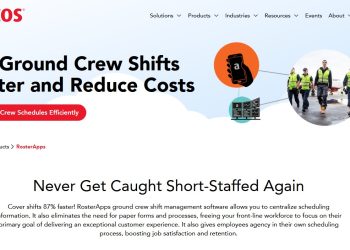In today’s digital age, businesses continuously seek ways to engage with their customers to build brand loyalty, increase revenue, and improve customer satisfaction. Consumer engagement software provides various tools and techniques to help businesses connect with customers and create meaningful interactions. However, choosing the right consumer engagement software for your business can be challenging with so many available options. This article will explore the key factors to consider when choosing the right customer engagement software for your business.
Understand Your Needs:
Before you begin to search for consumer engagement software, it is essential to understand your business needs. What are your business goals, and what pain points are you trying to address? What do you want to achieve with consumer engagement software, and how will it fit into your overall marketing strategy? Answering these questions will aid you in identifying the features and functionality needed in your consumer engagement software.
Consider Your Budget:
Consumer engagement software comes in all shapes and sizes, with varying price points. When considering your budget, it is essential to think beyond the initial purchase cost. Some software may require additional hardware or ongoing maintenance costs, while others may charge a monthly subscription fee. Make sure to factor in all costs associated with the software before making a final decision.
Evaluate the Features:
Consumer engagement software offers many features to help businesses engage with customers. The most common features include email marketing, social media management, customer relationship management (CRM), chatbots, and loyalty programs. When evaluating the features of consumer engagement software, consider which ones are most important to your business goals and which ones will provide the greatest value to your customers.
Ease of Use:
Ease of use is a critical factor to consider when choosing consumer engagement software. If the software is difficult to use or requires extensive training, it can be a significant barrier to adoption. Look for software with an intuitive user interface and clear instructions for setup and configuration. Try out a demo version of the software to see how easy it is.
Integration:
Consumer engagement software can integrate with other systems, such as customer data, social media, and e-commerce platforms. The integration allows businesses to streamline their marketing efforts and provide a more personalized experience for their customers. When evaluating consumer engagement software, consider how it integrates with your existing systems and whether it can provide the level of customization that your business needs.
Security and Compliance:
Data security and compliance are vital considerations for any business that handles customer data. Consumer engagement software may collect, store, and process sensitive customer data like email addresses, phone numbers, and credit card information. Look for software that provides robust security features, such as encryption and two-factor authentication, and complies with industry standards, such as GDPR and CCPA.
Support and Training:
Support and training are crucial when choosing consumer engagement software. Look for software providers that offer comprehensive training and support options, such as online documentation, video tutorials, and live chat or phone support. Also, consider the availability of training resources and whether they are accessible to all team members.
Conclusion:
Customer engagement software is essential for businesses to connect with customers and build brand loyalty. When choosing the right consumer engagement software for your business, it is crucial to consider your business goals, budget, ease of use, integration, security, support, and training. By evaluating these factors, you can make an informed decision that meets your business needs and provides the greatest value to your customers. With the right consumer engagement software, you can create meaningful customer interactions, improve customer satisfaction, and drive revenue growth.






